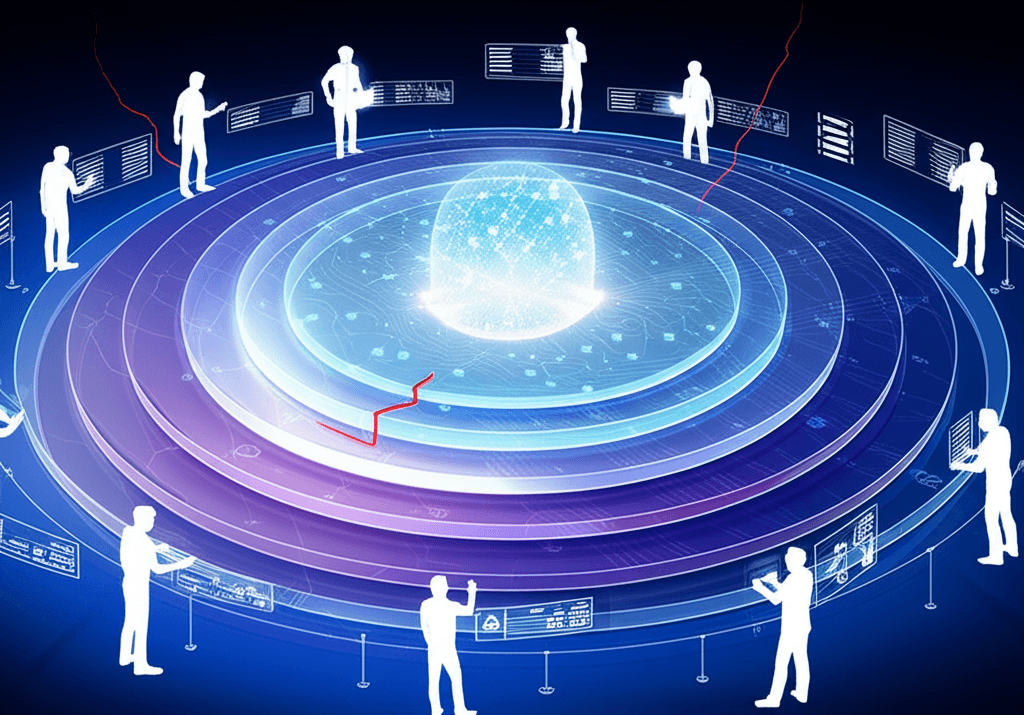Anthropic Details Novel AI Safety: Constitutional AI Guides Powerful Claude
Despite innovative safeguards like Constitutional AI, Anthropic faces a complex battle ensuring its powerful models don't cause harm.
August 13, 2025

As the artificial intelligence industry grapples with the immense power and potential peril of its creations, AI safety and research company Anthropic has publicly detailed a multi-layered strategy designed to keep its powerful model, Claude, from causing harm. Moving beyond reactive measures, Anthropic is embedding safety into its systems from the ground up, an approach centered on a specialized Safeguards team, a novel training technique called Constitutional AI, and a proactive Responsible Scaling Policy. This strategy, while comprehensive, exists within a landscape of intense competition and growing scrutiny over the true controllability of advanced AI.
At the core of Anthropic's operational safety efforts is its Safeguards team, a multidisciplinary group of policy experts, data scientists, engineers, and threat intelligence analysts.[1][2] This team operates across the entire lifecycle of a model, from influencing its initial training to monitoring for new threats once it is deployed.[2] Their work is guided by a Unified Harm Framework, which categorizes potential negative impacts into five key dimensions: physical, psychological, economic, societal, and individual autonomy.[2][3][4] This framework is not a rigid grading system but a structured lens to weigh risks and inform the company’s Usage Policy, which sets the rules for how Claude can and cannot be used, addressing critical areas like election integrity and child safety.[1][2] To proactively identify weaknesses, the team conducts Policy Vulnerability Tests, bringing in external experts in fields like terrorism and child safety to stress-test the system with difficult prompts.[5] A practical example of this occurred during the 2024 US elections, when collaboration with the Institute for Strategic Dialogue revealed Claude could provide outdated voting information, leading Anthropic to add a banner directing users to a reliable, non-partisan source.[6][5]
A foundational element of Anthropic’s safety philosophy is a proprietary method known as Constitutional AI (CAI).[7][1] This technique represents a significant departure from more common safety methods like Reinforcement Learning from Human Feedback (RLHF), which relies on large volumes of human-labeled examples of both good and bad outputs.[8] Anthropic's approach instead provides the AI with a "constitution," a set of guiding principles designed to instill desired behaviors like helpfulness and harmlessness.[9][8][10] These principles, inspired by sources like the UN's Universal Declaration of Human Rights, instruct the model to, for example, "choose the response that most respects the human rights to freedom, universal equality, fair treatment, and protection against discrimination" and to avoid endorsing misinformation or violence.[11] The key innovation is that the AI learns to critique and revise its own outputs based on this constitution, reducing the need for direct human oversight for every potential harmful response and building in a capacity for self-correction.[8][10] This process aims to make the AI's alignment with human values more explicit and scalable.[8]
Beyond the training of individual models, Anthropic has implemented a forward-looking framework called the Responsible Scaling Policy (RSP) to manage the risks of increasingly capable AI systems.[12][13][9] This policy establishes a series of AI Safety Levels (ASLs), modeled after the biosafety levels used for handling dangerous biological materials.[12][14] All of Anthropic's current models must meet the ASL-2 standard, which is appropriate for most current large language models that can provide dangerous information, but not more than a search engine could.[15] The policy defines specific capability thresholds that, if crossed, trigger the need for stricter safety and security measures. For instance, if a model demonstrates the ability to meaningfully assist someone in creating chemical, biological, or nuclear weapons, it would necessitate the implementation of ASL-3 standards.[16][15] If a model could automate complex AI research tasks that normally require human expertise, it could even trigger ASL-4 safeguards.[15][14] This tiered system forces a pause in the scaling of more powerful models if the necessary safety protocols are not yet in place, directly incentivizing the company to solve safety issues before unlocking further development.[12] In conjunction with the launch of its Claude Opus 4 model, Anthropic proactively activated ASL-3 protections as a precautionary measure, citing the model's improved, more comprehensive answers on bioweapons-related topics.[17][18]
Despite these extensive efforts, Anthropic’s approach is not without its challenges and critics. The company, which was founded by former OpenAI employees concerned about safety, positions itself as a safety-conscious alternative in the AI race.[1][19] However, the broader AI field is still grappling with fundamental issues of model interpretability and control.[20] Adversarial testing, or red teaming, is a critical component of Anthropic's strategy, where both internal teams and external experts try to "break" the models to find vulnerabilities.[21][22] These efforts have included testing for multimodal risks, such as those associated with image inputs in the Claude 3 model family, and even using AI itself to automate the red-teaming process.[21][22] Yet, reports from organizations like the Future of Life Institute have highlighted that all major AI models, including Anthropic's, remain vulnerable to "jailbreaking" techniques that bypass safety guardrails.[23] While Anthropic ranked highest among its peers in a recent safety assessment, it still only received a C grade, indicating that even the most safety-focused labs have significant room for improvement and cannot yet provide quantitative guarantees of safety.[23] The rapid pace of development across the industry puts immense pressure on these voluntary safety commitments, creating a persistent tension between innovation and precaution that defines the current era of artificial intelligence.
Sources
[8]
[9]
[10]
[11]
[12]
[13]
[17]
[18]
[19]
[20]
[21]
[22]
[23]